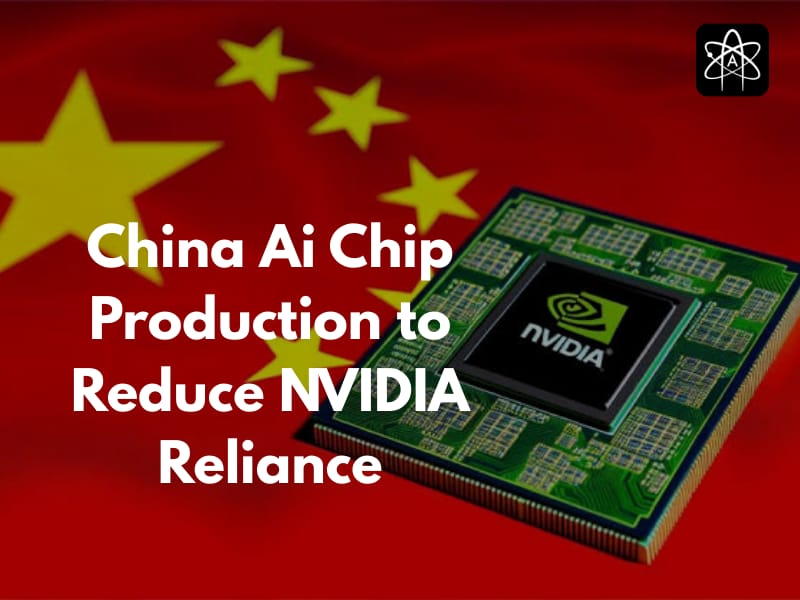China AI Chip Production to Reduce NVIDIA Reliance by 2026
2023 was the hype year for AI, and 2026 might be the year of AI hardware dominance, at least

2023 was the hype year for AI, and 2026 might be the year of AI hardware dominance, at least in China. Imagine factories humming at full tilt and engineers scrambling to refine designs; this is what China AI chip production is promising to do to reduce NVIDIA’s reliance. The Financial Times reported that Chinese manufacturers want to triple the AI chip output by 2026.
This seems like an ambitious plan that is aimed squarely at reducing NVIDIA’s reliance by 2026. There is a lot of tension going on between Washington and Beijing in shaping technology, and China AI chip production feels less like a business strategy and more like survival. At the heart of this China AI chip production plan is Huawei, which is quietly building itself to expand internationally.
Huawei is building new facilities and collaborating with Semiconductor Manufacturing International Corporation to create chips that can give competition to NVIDIA. This is a good story that combines geopolitics with innovation and AI, and it could redefine the AI landscape in just a few years. Let’s get into the whole picture of China AI chip production to reduce NVIDIA’s reliance by next year.
Huawei’s Strategic Facilities
At the forefront, we have Huawei, and many reports suggest that the company is planning to begin production at a dedicated AI chip plant by the end of the year. There are two additional plants that are scheduled to come online in 2026, and these facilities are designed to specifically support the needs of the company, even though the ownership remains unclear.
Huawei’s strategic facilities may or may not be controlled directly or indirectly, but the output will be crucial in sustaining Huawei’s AI ambitions. If the three plants can become operational as planned, Huawei’s combined output could even surpass the current China AI chip production of SMIC, which is China’s top chipmaker right now.
Expanding Role of SMIC
The expanding role of SMIC is always recognised as it is doubling down on production, and reports indicate that SMIC plans to double its 7-nanometre chip manufacturing capacity. The China AI chip production is expanding because 7nm chips are at the cutting-edge of what SMIC can produce under the current United States sanctions.
Huawei and SMIC’s relationship is very symbiotic and Huawei needs SMIC’s expertise and facilities while SMIC is relying on Huawei’s demand to scale its production. Both of them are forming the backbone of China’s push for AI chip independence and this partnership highlights the pragmatic side of China AI chip production rather than relying on one company.
Beijing’s Push for Self-Sufficiency
The massive investment in China AI chip production is not just about Huawei or SMIC, but it is also for a coordinated push from Beijing. The government is accelerating the development of processors, and it is designed to rival NVIDIA’s China-special H20 chips that are restricted due to the United States’ security concerns.
China’s priority is very clear, and it is to reduce reliance on foreign suppliers and secure homegrown alternatives that can keep its AI ambitions alive. The United States has already imposed multiple rounds of export restrictions and cut China off from the latest AI chips and advanced manufacturing tools, and hence, there is Beijing’s push for self-sufficiency in AI.
Read more: Swedish Startup Farang AI Raises €1.5M to Build New LLM Architecture
Read more: Perplexity 80% Revenue Sharing for Publishers Through Comet Plus
Mass Production Plans
One of the most important parts of this story is Huawei’s mass production plans for China AI chip production by 2026. This comes despite the ongoing United States restrictions that have limited its access to advanced chipmaking equipment and global supply chain for Chinese products. Huawei’s determination is really commendable and to move forward underscores its resilience.
The question that remains is that can Huawei achieve high yields at scale and will its chips match NVIDIA’s performance. According to us, even partial success here would be monumental, and it would prove that U.S. restrictions can slow China down.





